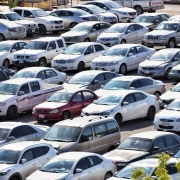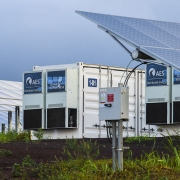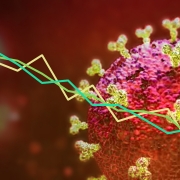Higher COVID-19 fatality rates among urban minorities come down to air pollution
Written by David VanderGriend – This post also appeared in the Kansas City Star
A startling reality has surfaced from the coronavirus health crisis: Pollution has been significantly reduced in recent weeks during the shutdown. Whether in New Delhi, Kansas City, New York, or Beijing, less driving has resulted in cleaner air. Vistas that previously were only foggy images have burst through as crystal clear pictures of what clean air actually looks like. If we thought we were cleaning the air before, we now see we can do better.
The fact that reduced driving equates to reduced pollution is not a surprise to many of us in the fuel business who have studied and understand the negative aspects of our reliance on petroleum alone. And it relates to a second disturbing reality: Minority communities are disproportionately contracting COVID 19 because of the poor air quality resulting from the traffic congestion of the inner cities.
In establishing the Urban Air Initiative, our objective was to improve fuel quality, while recognizing that eliminating the internal combustion engine is neither an immediate nor practical strategy to reducing pollution. With more than 260 million cars registered in the U.S., we will continue to rely on gasoline for the foreseeable future — but we can identify the most harmful components of gasoline and replace them. Ethanol, for example, is a superior substitute for the family of benzene octane gas additives that produce microscopic particulates and are linked to a range of respiratory and other ailments.
In naming our organization the Urban Air Initiative, we did so knowing urban areas are disproportionately subject to harmful auto emissions, and that they are where the most help is needed.
And who lives in urban areas? The very minority groups feeling the brunt of the coronavirus crisis. New York City reports that inner city minorities are experiencing the highest fatalities from COVID-19, and Midwest cities such as Chicago and Milwaukee are similarly affected. So an obvious question is whether these people were predisposed to getting sick by virtue of simply living in urban areas. Our research has always suggested that is the case, but a new study from the Harvard School of Public Health is one of many research efforts that come to this conclusion.
The most important finding of the study is that people living in counties in the U.S. that have experienced a higher level of air pollution as measured by the Environmental Protection Agency over the past 15 to 17 years have a substantially higher COVID-19 mortality rate. And we believe pollution is much, much worse than what the EPA measures. Particulates associated with coal fired power plants or diesel fuel are just part of the story. Much smaller “ultra-fine” particulates that are literally microscopic are essentially unregulated and unreported.
In our correspondence with the EPA, the agency has conceded its modeling fails to capture these tiny particles and their precursors. It has long been understood that fine particulates linger in the air and travel great distances, with data showing anyone within 300 yards of a congested roadway is exposed. Now imagine the impact in an urban area, be it midsize Kansas City or mega-size New York, where pedestrians are within mere feet of automobiles on every corner and tall buildings trap the emissions. Now enters the coronavirus, attacking the same respiratory system that has long been compromised by near-roadway exposure.
The Harvard study pulls no punches in coming to its conclusions: “The majority of the pre-existing conditions that increase the risk of death for COVID-19 are the same diseases that are affected by long-term exposure to air pollution. … The study results underscore the importance of continuing to enforce existing air pollution regulations to protect human health both during and after the COVID-19 crisis.”
The takeaway here is that this is of course a nationwide problem, but it is most concentrated in our cities. All Americans — minority or not — need to understand they were already at risk, and will continue to be until we reduce emissions and improve our fuels.
David VanderGriend is president of the 501(c)(4) nonprofit Urban Air Initiative in Colwich, Kansas. Urban Air Initiative is a member of MEC.

 Dennis Schroeder / NREL
Dennis Schroeder / NREL

